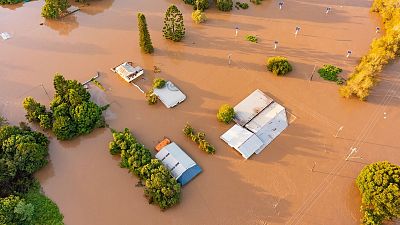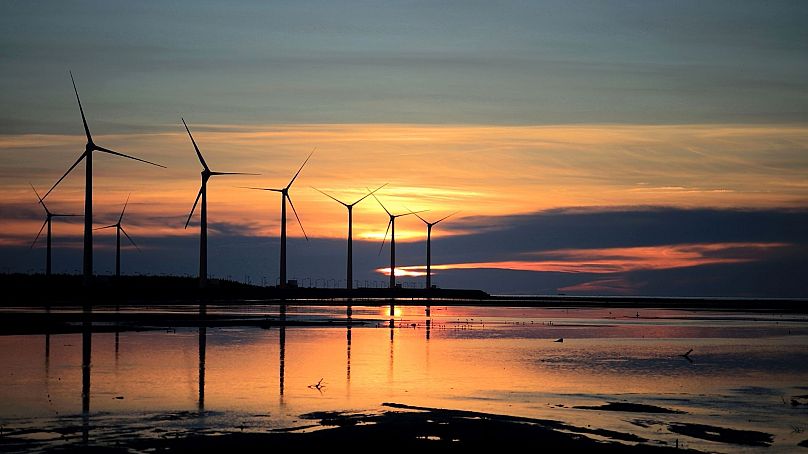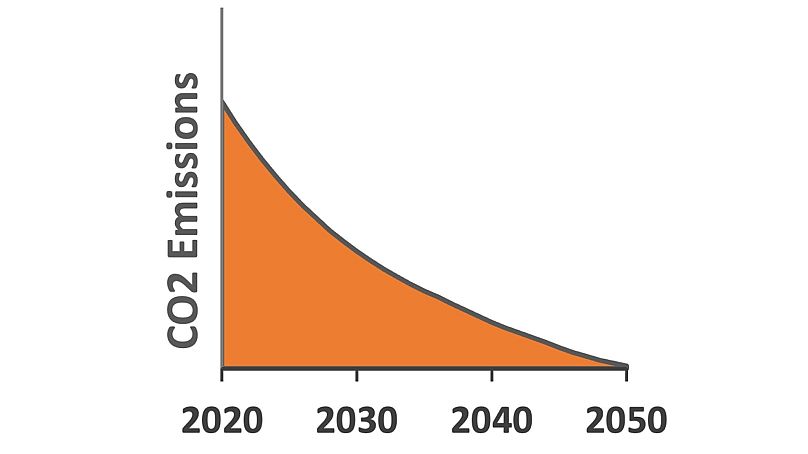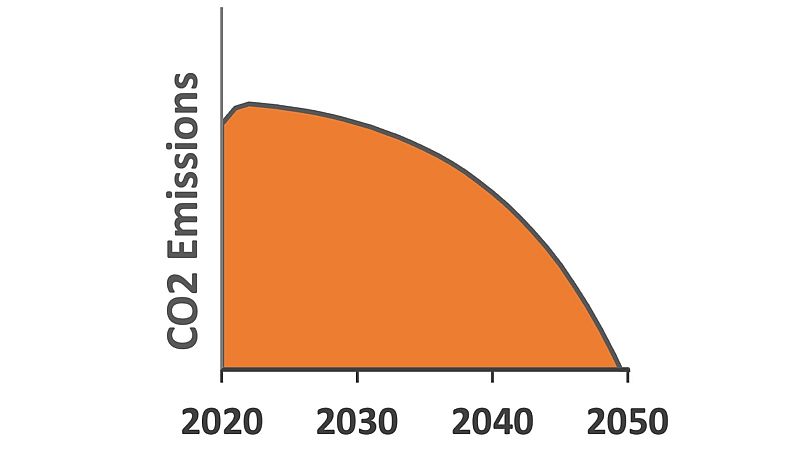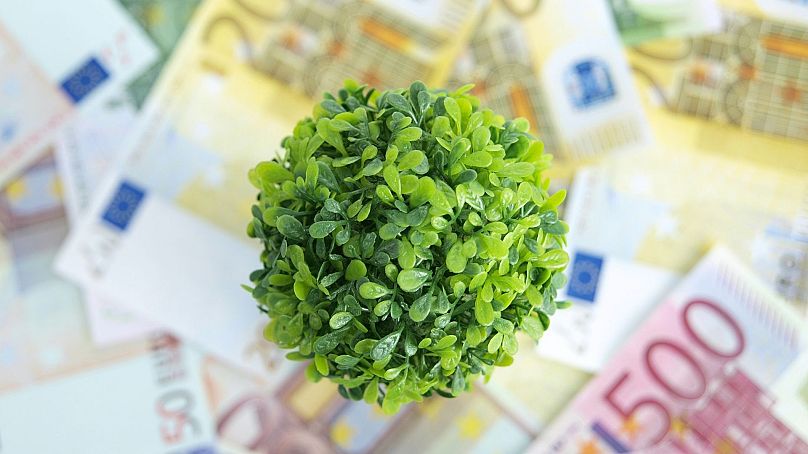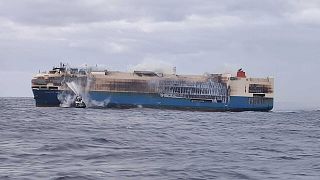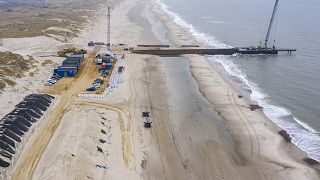Volodymyr Zelenskyy: Why Ukraine's 'brave
and anti-nationalist*'
president is a nightmare for Moscow
By Aleksandar Brezar • Updated: 01/03/2022

President Volodymyr Zelenskyy looks at a front-line position from a shelter as he visits eastern Ukraine - Copyright Ukrainian Presidential Press Office via AP, Fil
He was IS a multimillionaire comedian, the voice of Paddington Bear and won Dancing with the Stars.
After his TV series based around a man who accidentally becomes president became a hit, he founded his own party and was elected president in real life.
Now, he's leading a country being invaded by the second most powerful military in the world.
Those who support the way Volodymyr Zelenskyy is helming the country in the midst of an invasion forget that Ukraine was already at war for years when he took office in a surprising landslide victory in 2019. He pledged, like many other Ukrainian politicians, that he would put an end to it.
"He was trying to do everything to achieve peace," Iuliia Mendel, a journalist and former spokeswoman for Zelenskyy, told Euronews.
"He promised to finish the war soon," Mendel explained.
The negotiations with Russia over the breakaway Kremlin-backed territories in Donbas led to successful ceasefire agreements, and Zelenskyy managed to bring home around 150 prisoners of war.
Russian President Vladimir Putin grew increasingly irritated by his Ukrainian counterpart, who practically predicted his political trajectory with his Sluga narodu or Servant of the People hit TV show, where he played an idealistic, unpretentious history teacher know-it-all forced to slug his way through a system riddled with corrupt bureaucrats.
Putin might have also become concerned by Zelenskyy's growing popularity in Russia, according to Mendel.
After purchasing the entire series in 2019, Russian channel TNT only ran one episode before pulling the show from the air, claiming it only aired it as a marketing ploy.
It also censored a joke in the episode in which Putin is said to be wearing a Hublot watch — a reference to a racy anti-Putin chant.
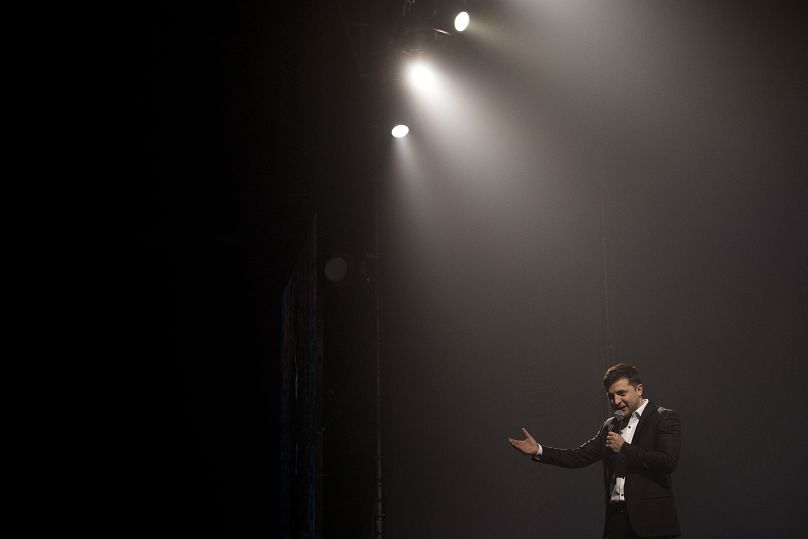
Ukrainian comedian and presidential candidate Volodymyr Zelenskyy performs during a show in Brovary, near Kyiv in 2019
Emilio Morenatti/Copyright 2019 The Associated Press. All rights reserved
At the same time, Zelenskyy grew more disgruntled with Putin's interpretation of the Minsk Agreements, signed to establish a ceasefire between the two sides and defined the relationship between the Kyiv government and the occupied territories in Donetsk and Luhansk.
And then Putin massed around 100,000 troops on Ukraine's border, starting in the spring of 2021, which were later withdrawn only to appear again in the winter.
Zelenskyy gave an interview to the Financial Times, in which he openly criticised the Western-brokered 2014 and 2015 peace agreements and said he would not talk to Donbas separatists, calling them "terrorists" – a considerably harsher tone than he had earlier in his presidency.
"He actually publicly said that the Minsk agreements did not work. After that, their rhetoric changed a lot and they declined any meetings and absolutely blocked the dialogue," Mendel said, recalling the Russian response.
"And although Zelenskyy's ideology didn't change, his rhetoric went from milder to stronger."
But Putin's claims of the country being run by "Nazis and drug addicts" are outrageous, Mendel insisted. Zelenskyy, in particular, is as far removed from a hardline nationalist as one could be.
"Zelenskyy always said that Ukrainians are different — we have different religions, we speak different languages — but we are all united as a nation, and he was always proud of the diversity that exists in Ukraine as something that must make us stronger, not weaker."
Zelenskyy exceeds expectations
Just like his character's surname on the "Servant of the People", Goloborodko — meaning "beardless," but also poor or wet behind the ears — many took Zelenskyy's freshly shaven, youthful look for naivety.
Some even accused him of working for the Kremlin, most notably his main opponent in the elections, former president Petro Poroshenko. Zelenskyy comes from the mainly Russian-speaking region of Kryvyi Rih.
"There were a lot of well-organised attacks by the opposition on him when he came to power, saying that he was a Russian speaker and that he will take Ukraine to Russia," Mendel said.
"But that was never true. I was with him at the very beginning of his presidency, and he was always devoted to Ukraine."
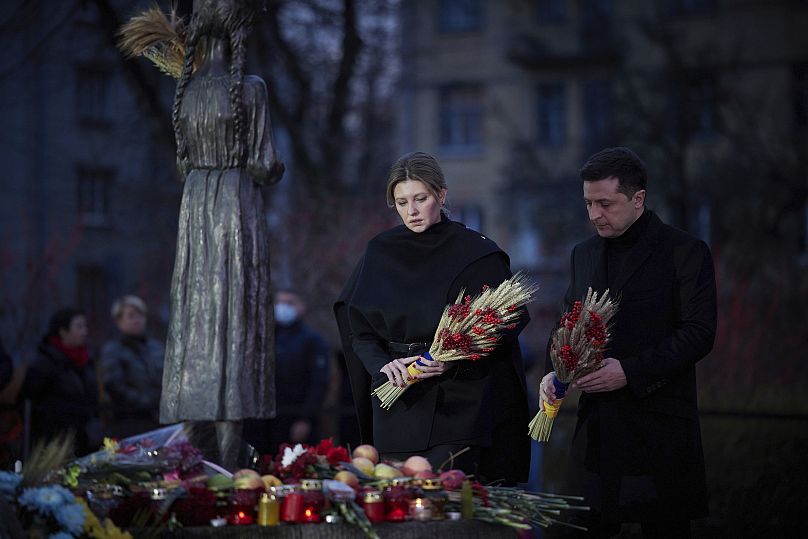
Ukrainian President Volodymyr Zelenskyy and his wife Olena visit a monument for Holodomor victims during a commemoration ceremony in Kyiv in 2021
Uncredited/Ukrainian Presidential Press Office
After news of US intelligence broke of an imminent Russian attack on Ukraine earlier in February, many were taken aback by his constant appeals for calm and statements that there is "no need for panic".
Some of his critics accused him of being "dispiritingly mediocre," as one op-ed in the New York Times claimed on the eve of the invasion.
In real life and the midst of war, Zelenskyy proved to be much more astute.
Now sporting a five-o'clock-shadow and olive-green fatigues, Zelenskyy quickly grew into the leading motivating voice for both his army and his citizens, appearing in videos in downtown Kyiv after being labelled "target number one" and repeatedly rejecting Western offers to leave the country.
"I am here. We are all here. We are in Kyiv. We are defending Ukraine," he said in one video filmed on his phone on Friday night as air raid sirens permeated the streets of the capital.
Due to his relaxed style and the occasional lack of diplomatic language that would make way for sarcasm and barbed retorts, people wondered if he was serious or performing, Daniel Bilak, a Canadian attorney and former advisor to two Ukrainian prime ministers, told Euronews.
But the way Zelenskyy responded to the war has "virtually completely rehabilitated him in all of his doubters' eyes in the space of several days," he said.
"This is not a performance. People feel the passion. People feel the pain because we're going through it every day."
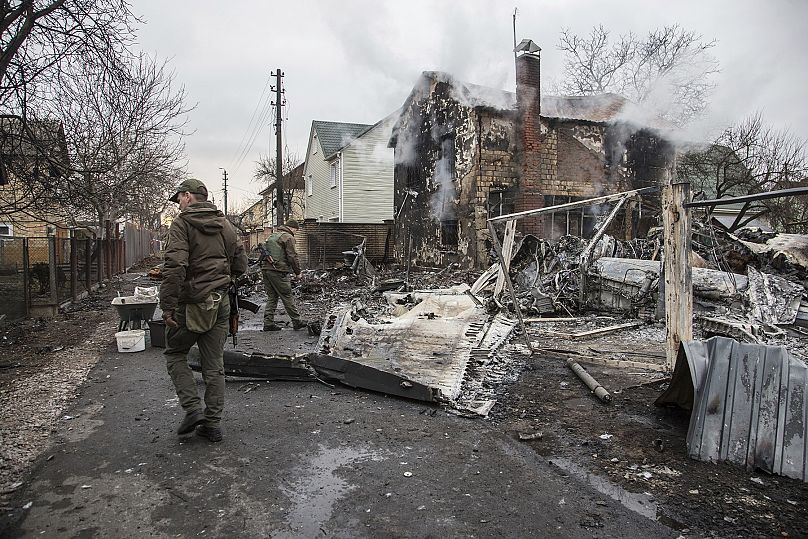
Ukrainian servicemen walk by fragments of a downed aircraft in KyivOleksandr Ratushniak/Copyright 2022 The Associated Press. All rights reserved.
What also helped Ukraine stand up to the aggression was that Zelenskyy changed the leadership of the armed forces last August, Bilak explained.
"He put into place who should be there. These were battlefield commanders who had experience in the east, none of them had served in the Soviet military, which was something new," he said.
While the new military leadership had only a few months to prepare, Zelenskyy's calls for calm signalled that the government was aware of what was to come. And it worked, Bilak said.
"Ukrainians did not panic, did not lose their heads over this, and this is really crucial because at its essence this is a psychological war of attrition. Of who will crack first," he stated.
Path to EU forged in war
Since the invasion, Zelenskyy's repeated appeals for NATO and EU assistance have resulted in the latter deciding to purchase and send weapons to the country – for the first time in its history – while Russia and its leadership face crippling sanctions.
But the two blocs have avoided a direct answer to any formal talks regarding Ukraine's membership so far, its aspirations being dismissed by claims that the country is far from ready.
Bilak believes that this is too hard on a country that has undergone significant progress since it declared independence from the Soviet Union in 1991.
"This is a democratic country worth defending," he said. "Ukraine is a messy, vibrant, emerging democracy. This country can give most European nations lessons in democratic government, frankly."
Although Ukraine signed its stabilisation and association agreement in June 2014, Brussels has largely ignored the idea of any of its Eastern Partnership countries entering the bloc. The country was at war, and the membership process contains gruelling reforms.
Now Zelenskyy might just find himself in another role – that of a leader who finally brokered a deal, even if it was done by forcing the bloc's hand in dire circumstances. While Kyiv was under intense shelling, he signed an application for membership together with the prime minister and the chairman of the Verkhovna Rada.
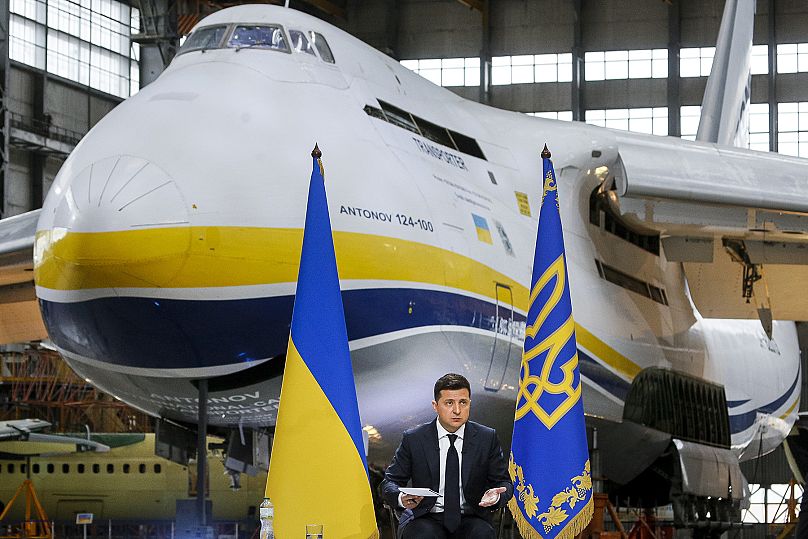
President Volodymyr Zelenskyy gestures while speaking to the media during a news conference with the world's largest aeroplane, Mriya in 2021
MRIYA WAS SEIZED AND DESTROYED BY RUSSIAN TROOPS
Efrem Lukatsky/Copyright 2021 The Associated Press. All rights reserved
Although the EU has acted much more quickly and collectively than most people thought possible, the road to the EU might still be a long one, Anthony Zacharzewski, founder of Democratic Society, a Brussels-based NGO, believes.
"At best, the EU will fire the starting gun on a membership marathon," he told Euronews.
"The Treaties don't provide for speeding up entry - maybe with goodwill on both sides it could be done in five years, but everyone thinks that there is a need for a general revision of the Treaties and that could take even longer."
Instead, Zacharzewski envisions a makeshift solution.
"One possible approach would be for the EU to create a new model of accession agreement giving non-voting 'waiting room' membership to countries that meet democracy and rule of law criteria and make a firm commitment to join."
Yet the war will determine not just Ukraine's future but also that of Russia, as Zelenskyy can carry the growing legitimacy forward, while Putin is now the world's pariah.
"If Zelenskyy survives, he will have immense personal authority at home and with Europe. It will be hard to resist calls for Ukraine to swiftly be made a candidate country – if he manages peacetime as well as he has managed war," Zacharzewski explained.
* COSMOPOLITAN, MULTICULTURAL, GLOBALIST





 © CBC Trent Oster, standing, is the CEO of Edmonton independent video game company Beamdog. He was a co-founder of BioWare in 1995.
© CBC Trent Oster, standing, is the CEO of Edmonton independent video game company Beamdog. He was a co-founder of BioWare in 1995. © David Bajer/CBC Kyle Kulyk founded Itzy Interactive more than a decade ago, starting in mobile games before moving to computer games.
© David Bajer/CBC Kyle Kulyk founded Itzy Interactive more than a decade ago, starting in mobile games before moving to computer games.